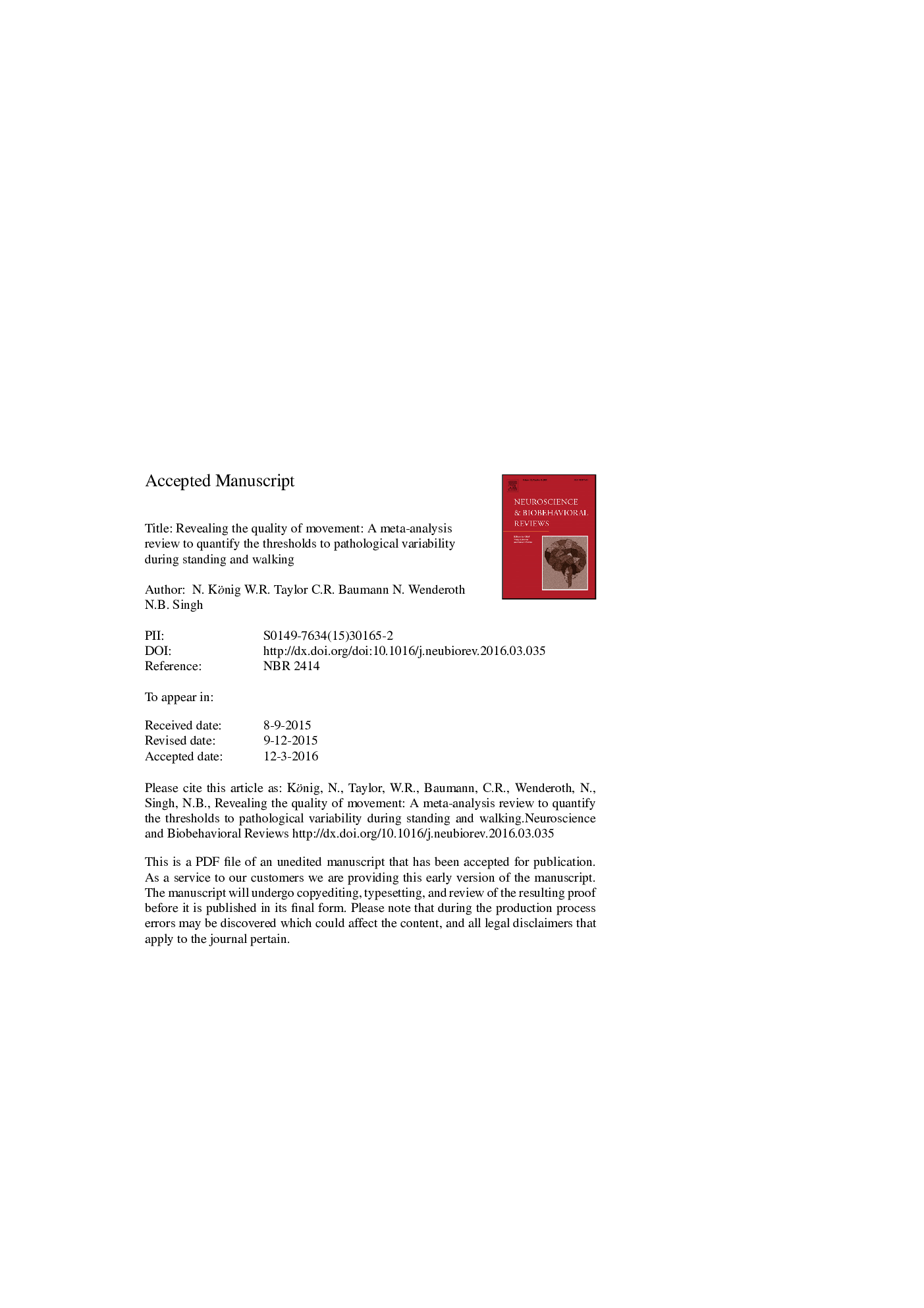| Article ID | Journal | Published Year | Pages | File Type |
|---|---|---|---|---|
| 7302768 | Neuroscience & Biobehavioral Reviews | 2016 | 21 Pages |
Abstract
After examining 13,195 publications, 109 studies were included. Results from over 3000 healthy subjects and 2775 patients revealed an overall positive effect size of pathology on variability of 0.59 for walking and 0.80 for sway. For the coefficient of variation of stride time (ST) and sway area (SA), upper thresholds of 2.6% and 265Â mm2 discriminated pathological from asymptomatic performance, while 1.1% and 62Â mm2 identified the lower thresholds for pathological variability. This window of healthy performance now provides science based evidence for the discrimination of both extremely low and extremely high levels of variability in the identification as well as standardised monitoring of functional status in neurological cases.
Related Topics
Life Sciences
Neuroscience
Behavioral Neuroscience
Authors
N. König, W.R. Taylor, C.R. Baumann, N. Wenderoth, N.B. Singh,
